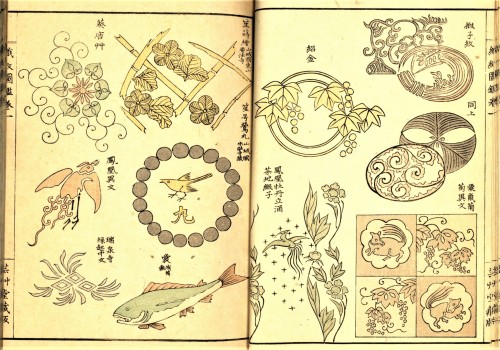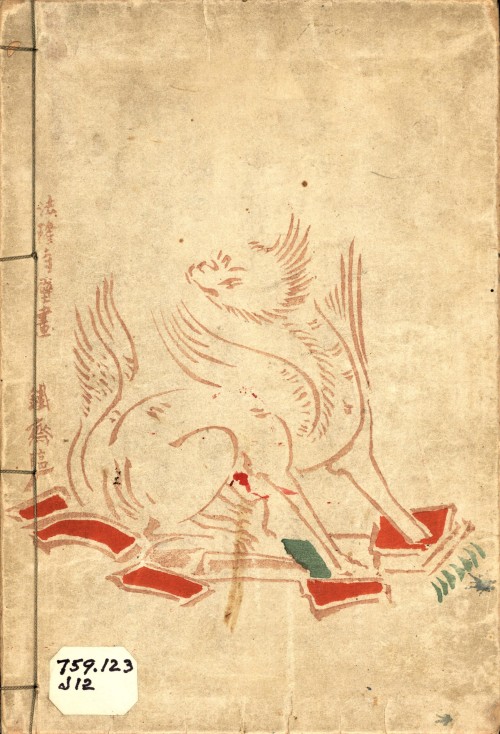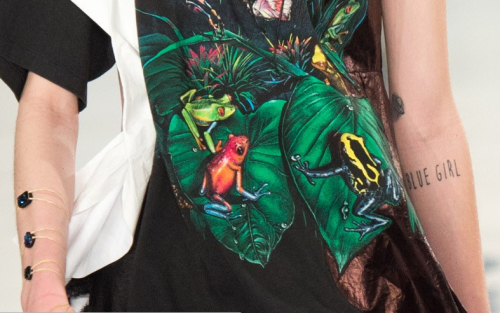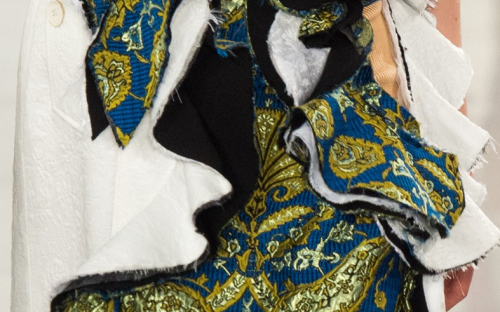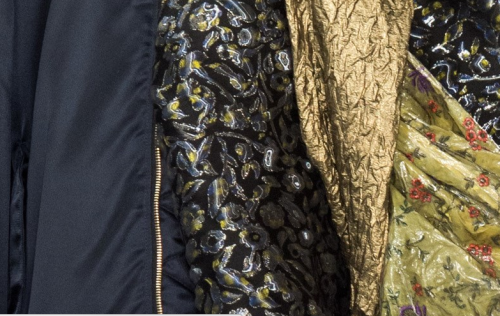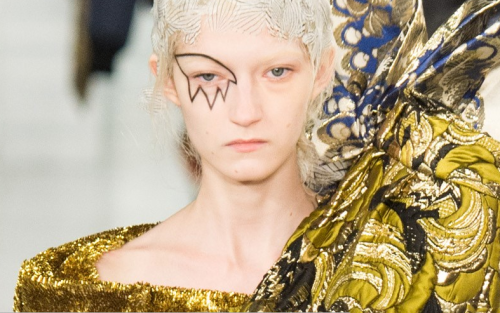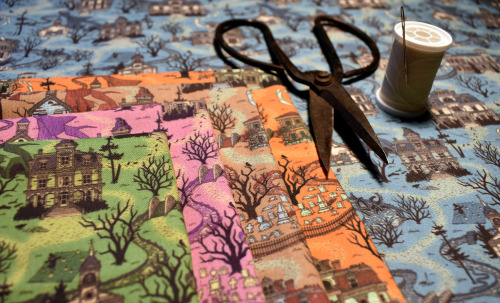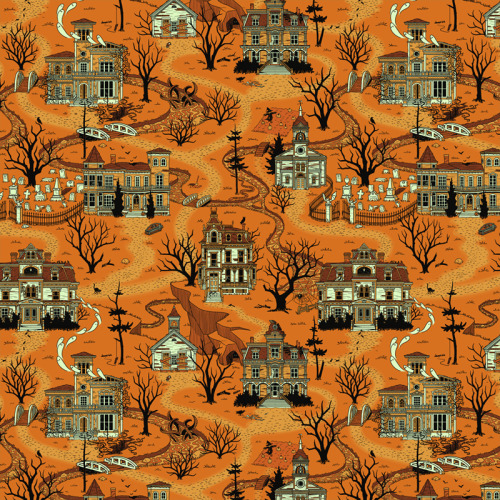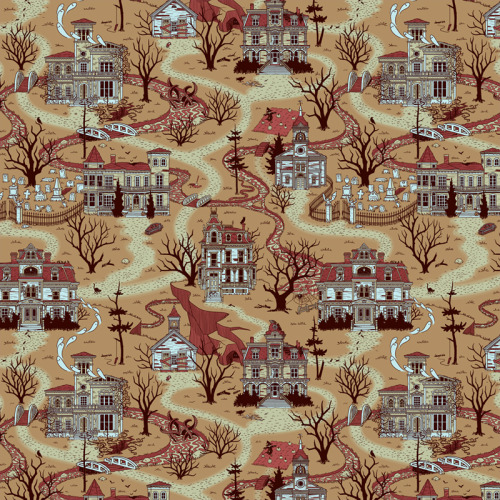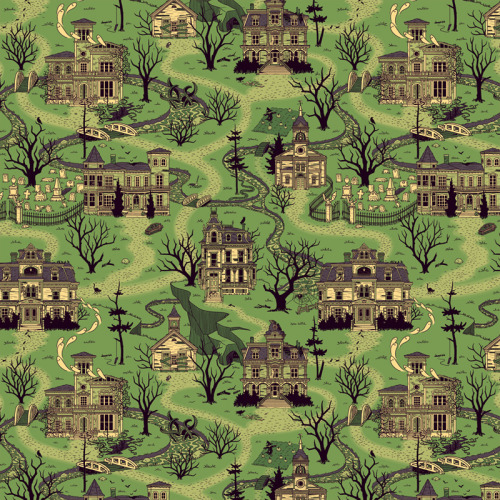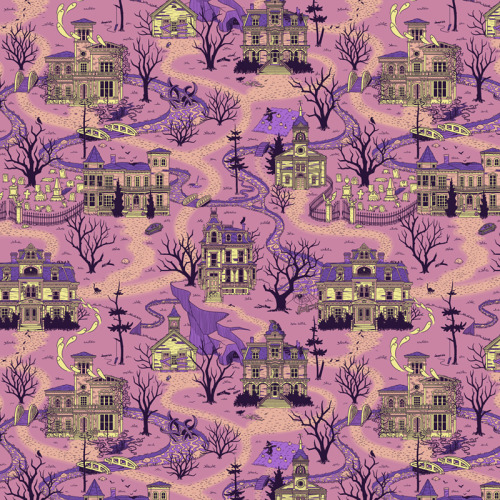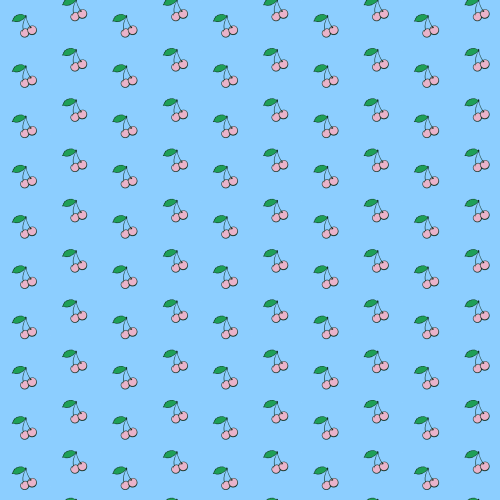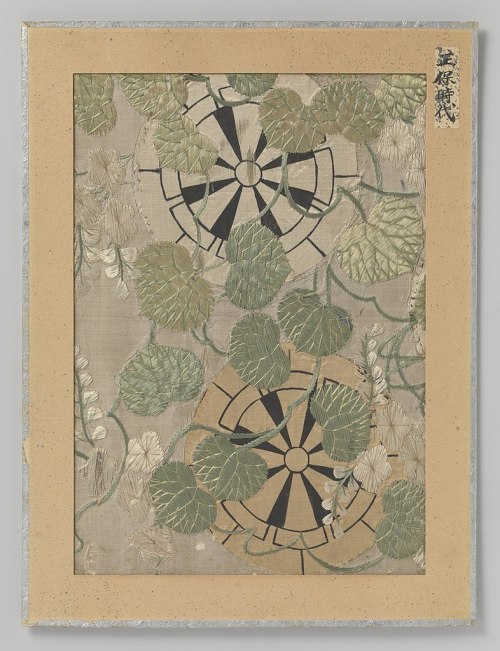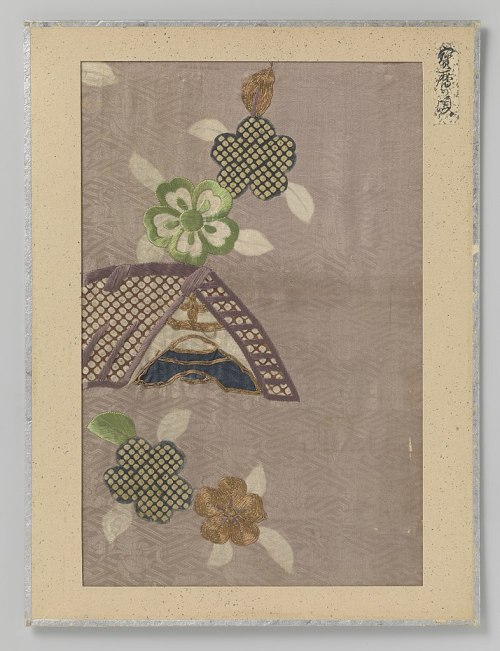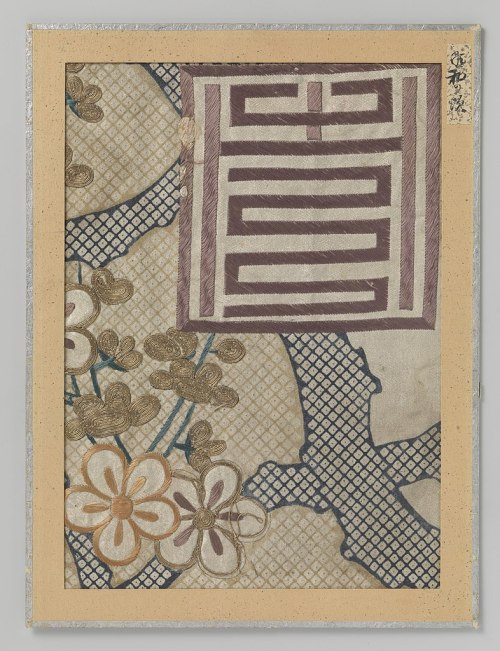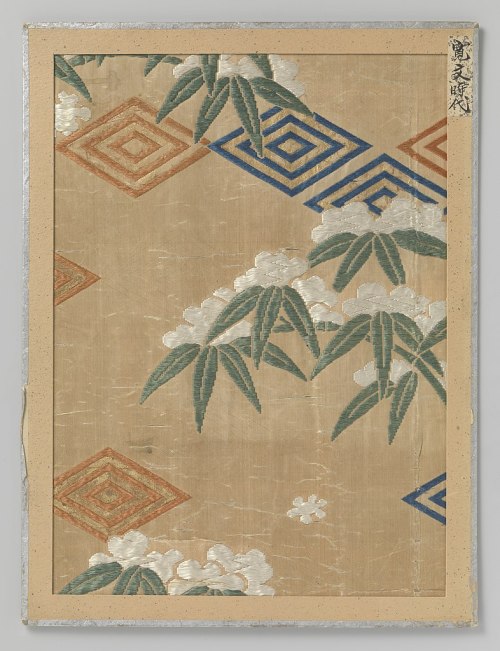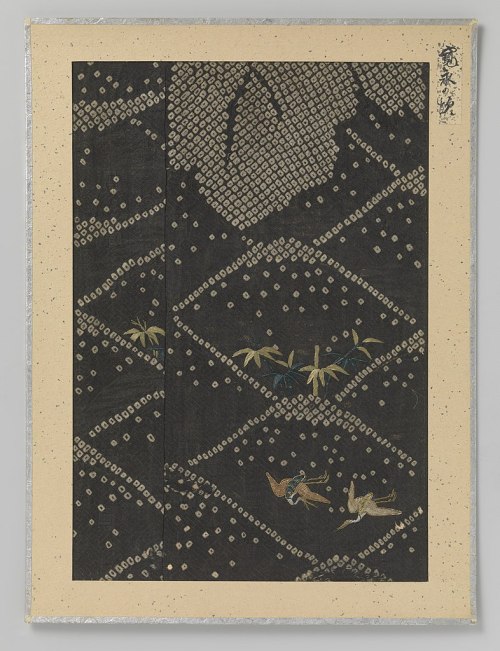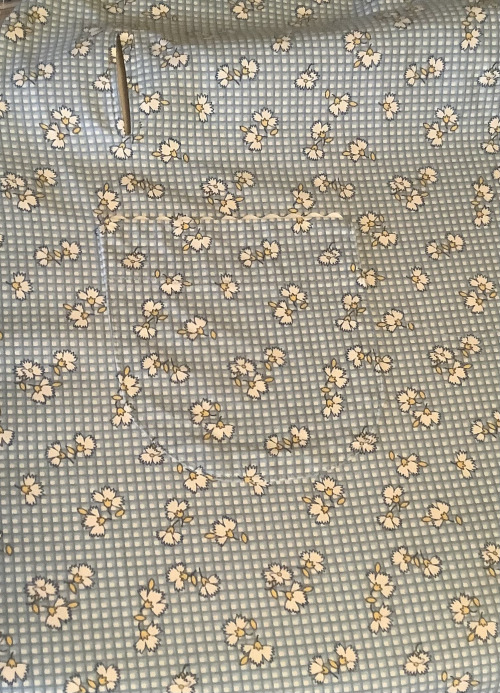#fabric design
Decorative Sunday
Japanese Pattern Book
This week we present pages from the first of a two-volume, traditional Japanese fabric-pattern sample book, Orimon ZukanbyRinō (or Rindo) Fujii, published in Kyoto in 1898. As prosperity grew in the early Edo Period of the 17th century, a fashion-conscious audience developed and flourished, leading to the publication of the first pattern books, hinagata-bon 雛形本, in the 1660s. Designs were inspired by a wide range of sources, including the natural world, folklore, history, signs of the zodiac, auspicious symbols, and literature. These early works were printed using traditional woodblock technology in black and white, often including notes describing the intended color and type of fabric.
This novel type of publication proved very popular and they continued to be produced into the 20th century. As color printing became more sophisticated, so did pattern books, and by the late 19th century, publishers, led by Kyoto-based firms, were collaborating with noted artists to produce a range of sample books from which clients could choose their preferred colors and fabrics, such as the example presented here.
ViewmoreDecorative Sunday posts.
Post link
Details of the Jean-Paul Gaultier studio//By Couture notebook.
Check their amazing website:
www.couturenotebook.com
Post link
The collection for Amaike USA I made, presented this in Paris at Première Vision. Special handembroidery on the lightest fabric in the world.
For mor information:
www.amaikeusa.com&www.jolindeverbaandert.com
Post link
Say hello to the crazy details of Maison Margiela. Like the mixture of fabrics en details in this collection.
Post link
Details of the Jean-Paul Gaultier studio//By Couture notebook.
Check their amazing website:
www.couturenotebook.com
Post link
Interested in fun ocean themed fabric? I’ve slowly been building my Spoonflower shop and there are now 22 designs available to buy and more on their way!




To check out my shop, click the link below
https://www.spoonflower.com/profiles/squiddllr
squiddllr’s shop on Spoonflower: fabric, wallpaper and home decor
My original fashion for Minx using fellow JemConner, Davide’s argyle fabric design. Fashion sewn and photographed by me.


I made graphics for the poppy dress that Clash wears in the Season 2 Episode 7 of Jem, “Father’s Day”




Original Stingers-inspired fabric designs, sketched by JemCon friends and graphic-designed by me
Post link


Chamisa Garden
Digital collage
https://bluerainprintshop.com/collections/new-in/products/chamisa-wrapping-paper
Embroidered textile fragments (Japan, 16th-19th century).
1) Autumn plants (1764 - 1771)
2) Wheels and aoi leaves (1644 - 1648)
3) Flowers and leaves on purple silk (1573 - 1591)
4) Applique of chrysanthemums on dark ground. (1688 - 1703)
5) Embroidery and print, embellishment on lilac damask background (1751 - 1764)
6) Embroidery of the Chinese character `Shou` (1764 - 1772)
7) White oleanders and diamond motifs on ochre silk.(1661 - 1673)
8) Columns and floral motifs in colours (1716 - 1736)
9) Geometric motifs and embroidery on black silk damask (1624 - 1643)
10) Lucky symbols on blue damask background (1801 - 1804).
Rijksmuseum.
Wikimedia.
Post link
In Praise of Small Prints: Or the Bungalow Apron
I have blogged this dress before, but as I ironed it, I was thinking how much I admire the small prints on fabric of the past. The Dress Doctors always recommended them because they were easier to work with while dressmaking and they were not overwhelming to the average woman’s figure. This fabric was sold as a 1930s era reproduction.
See here how easy it was for me to match the print where the patch pocket was placed. There was almost no waste in cutting out the pocket either. Matching was otherwise a moot point where the ruffles at the neck and the tiers or flounce below and as a wrap, it made little sense to try to match along the opening edge.
Now if the flowers had been large, I would have had to think about where to place them so as to avoid the grotesque effect of two flowers over the breast or one landing at the crotch. And placing the pocket would have meant wasting fabric. I often am charmed with a print sold online, only to look at the photo with a ruler, realize the flowers are 3, 5 or even 7 inches across, and reject it.
I cannot decide if the textile designers like to work with larger prints, if large prints sell well because they look better on a small screen for web buyers, of if making smaller prints is more difficult in the manufacturing process. I do know that I will hold out for them.
You can find this pattern as a reproduction. It is a Hoover apron or bungalow dress, made famous during WWI when Herbert Hoover ran the government program on food conservation and the home economists designed an apron that wrapped and could be rewrapped when one surface became filthy. I know, kind of disgusting, but that was how it was made famous. Regardless of rewrapping, this makes for a nice summer robe, or even a casual daytime dress. Although wrapped dresses are not the most practical for wearing out of the house–fear the windy day–the length and amount of overlap makes it relatively secure.
Find it here: https://www.etsy.com/listing/220673334/1930s-ladies-hooverette-day-dress?ga_search_query=1889&ref=shop_items_search_2&sca=1
For many charming reproduction fabrics from the 19th and the 20th centuries, go here: http://www.reproductionfabrics.com/
Post link
This is what I am going to try to paint on the fabric I bought, it’s for the lolita Hallow Eves party and I really hope I will succeed in adding all the details I drew on the computer!
Post link







